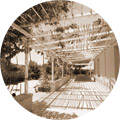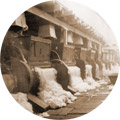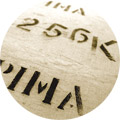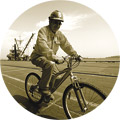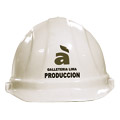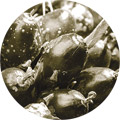-
Romero Group
-
About Us
We are a traditional Peruvian business group
Leaders in the different sectors within which we operate. We apply high production and management standards to compete worldwide. Our professionalization has allowed us to be recognized as one of the most solid and important groups in Peru.
-
Our Markets
Market share of the romero group in the world
The Romero Group's companies are located in different regions of Peru and in various Latin American countries providing their clients - belonging to different economic sectors - with high quality and value added service. Therefore, they are leaders in their sectors and an important employment generation source.
-
History and Evolution
The Legacy of Mr. Calixto Romero
The story of Mr. Calixto Romero Hernández is an example of reaching goals focused on a vision.
-
Did you know?
The concept of shared value in the Romero Group
This concept was developed from the beginning with the arrival of Mr. Calixto Romero Hernández to Piura 126 years ago and the incorporation of his company dedicated to export toquilla straw hats.
-
Innovation
For 126 years, the Romero Group has been adapting to the needs of a fast and ever changing market.
To us, it is essential to know our clients to provide them with the best products and services. Innovation is part of all the areas of companies of the Romero Group and it guarantees its leadership and continuity.
-
Our People
We are very proud of belonging to a remarkable history; we are fighting, entrepreneurial and persistent people
Every day we show our commitment to and responsibility of belonging to a recognized business group, the Romero Group. We can see opportunities where other people do not see them, motivate our colleagues, are loyal and supportive, and we have assumed this challenge for more than 126 years.
-
Annual Report
The history of the Romero Group has been written with effort, work, and responsibility day after day
We invite you to know our outcomes, main achievements, and all aspects that make us different. You can revise our annual reports and find information about the outcomes related to the Peruvian insurance market, financial results, and macroeconomic environment per year.
-
About Us
-
Companies
-
Companies of the Romero Group
Romero Group
The companies of the Romero Group are subject to high competitive standards that have let us create a leading business conglomerate in Peru with an important global projection.
-
Affiliates of the Romero Group
Companies Of The Romero Group
Apart from leading the economic sectors within it operates, the Romero Group has shares in important sectors allowing the country to grow.
-
The Romero Group Corporation
The Romero Group Corporation
It is the Romero Group's corporate center, supporting the different functions of the companies such as Audit, Corporate Accounting, Corporate Human Management and Development, Corporate Finance and Business Development, Corporate Legal Advisory, Shared Systems and Services.
-
Companies of the Romero Group
-
The Romero Foundation and CSR
-
The Romero Foundation
Mission
The Romero Foundation's primary mission is to encourage the autonomy of disadvantaged populations by generating business and institutional capacities that allow these groups to improve their quality of life.
-
CSR Videos
Companies of the Romero Group Images
We want to share with you the best images representing the spirit of the companies of the Romero Group, a conglomerate that recognizes in its workers the secret to lead the sector within which it operates.
-
CSR Reports
The Romero Group develops its operations jointly with its stakeholders
Which guarantees the growth of its companies, workers, suppliers, and the community within which it operates. For further information about the Romero Group's Corporate Social Responsibilty, we share our annual reports through the following links..
-
The Romero Foundation
-
Job Opportunities
-
What do we offer?
Talent Management
We guarantee to grow together, have the best teamwork, meet and offer them learning and improvement opportunities by means of programs that are tailor-made and according to the context of every company, keeping the characteristic tradition and culture through the years.
-
Join us
Job Opportunities
The Romero Group wants to have the best professional and technical talents in order to promote its development and leadership and to get the best human resources necessary for the growth of the companies.
-
What do we offer?
- News



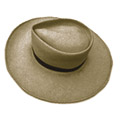

 Mr. Calixto Romero Hernández started new businesses such as the export of cow and goat leather.
Mr. Calixto Romero Hernández started new businesses such as the export of cow and goat leather.

